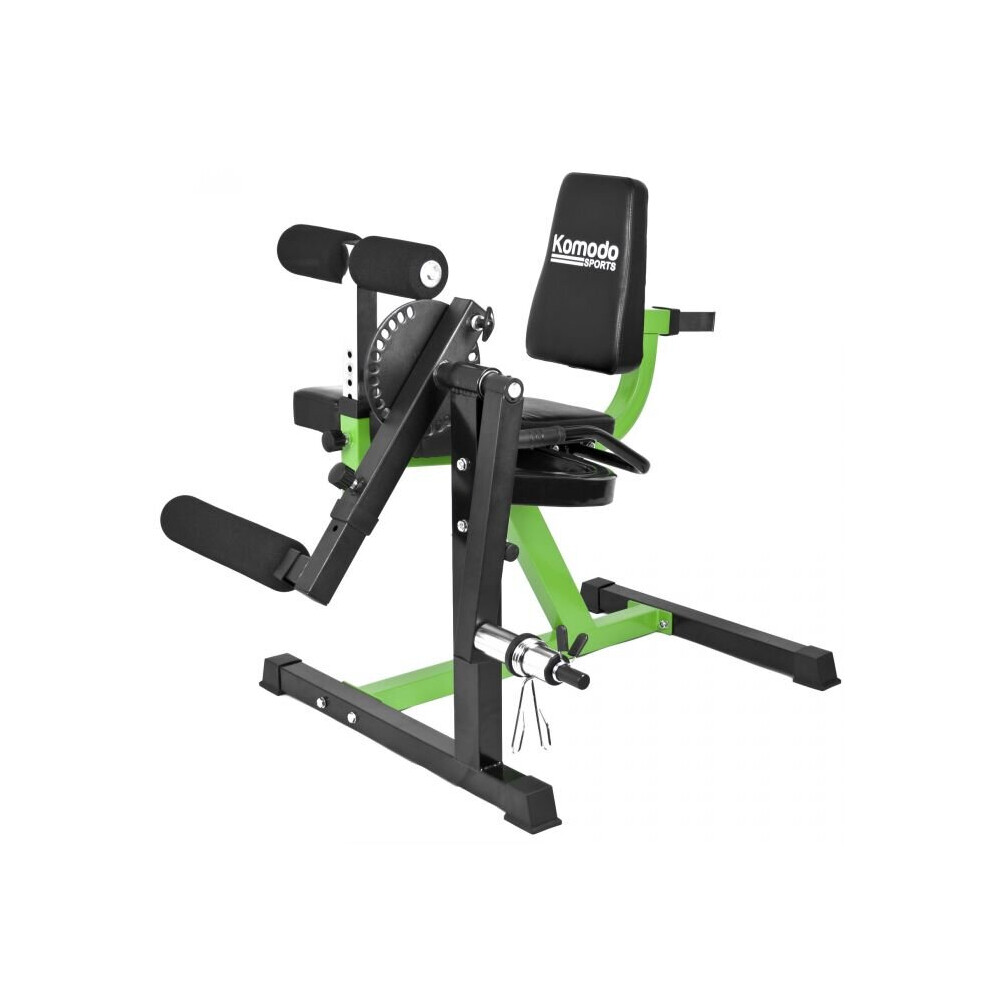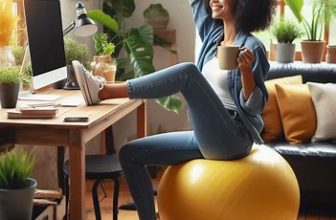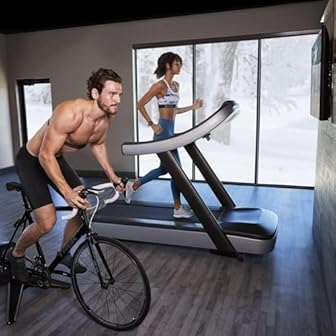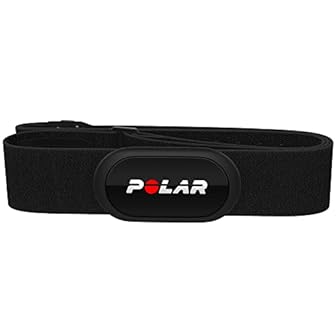Best exercises for building leg muscles
Building strong leg muscles is essential for overall fitness and can be achieved through various exercises. In the UK, some of the best exercises for building leg muscles include squats, deadlifts, lunges, and leg presses. These exercises target different muscle groups in the legs, such as the quadriceps, hamstrings, and calves, providing a comprehensive workout.
Squats are a fundamental exercise that can be performed with or without weights. They primarily work the quadriceps but also engage the hamstrings, glutes, and lower back. Deadlifts are another powerful exercise that targets the hamstrings and glutes while also strengthening the lower back. Lunges are versatile and can be done in multiple directions to target different areas of the legs. Leg presses, typically performed on a machine, allow you to lift heavy weights in a controlled manner, focusing on the quadriceps and glutes.
Incorporating these exercises into your fitness routine can lead to stronger, more defined leg muscles. It’s important to maintain proper form to avoid injury and to gradually increase intensity as your strength improves. Consulting with a fitness professional can also help tailor a leg workout to your individual needs and goals.
Building strong leg muscles is essential for overall fitness and can be achieved through various types of equipment available in the UK. Here are some top recommendations:
Squat Racks:
Squat Rack Multi-Function Barbell Rack Height Adjustable Dip Stand Home Gym Weight Lifting Bench Press Dip Station Push up Portable...
Squat Racks: The Foundation of Your Strength Training
Whether you’re a seasoned athlete or just starting your fitness journey, squat racks are an essential piece of equipment for any gym. They provide a safe and versatile way to perform a variety of exercises, not just squats. Here’s everything you need to know about squat racks to get the most out of your strength training.
Types of Squat Racks
- Power Rack: Also known as a power cage, this type of rack is a freestanding unit with four vertical posts and two movable horizontal bar catchers. It’s ideal for heavy lifting because it can catch the bar if you fail a lift.
- Squat Stand: This is a simpler version of the power rack and usually consists of two vertical posts with bar catchers. It’s great for smaller spaces but doesn’t offer the same level of safety as a power rack.
- Half Rack: A half rack is similar to a power rack but has an open design with two posts. It offers more flexibility for movement but less safety than a full power rack.
Benefits of Using Squat Racks
- Safety: Squat racks allow you to lift heavy weights without a spotter, as the safety bars can catch the weight if you can’t complete a rep.
- Versatility: You can perform various exercises like squats, bench presses, overhead presses, and deadlifts.
- Progression: They enable you to progressively increase the weight you lift safely, which is crucial for strength development.
Choosing the Right Squat Rack
When selecting a squat rack, consider the following:
- Space: Ensure you have enough room for the rack and for performing exercises comfortably.
- Weight Capacity: Check the maximum weight capacity to ensure it can handle your lifting needs.
- Adjustability: Look for racks with adjustable safety bars and catchers to accommodate different exercises and user heights.
- Accessories: Some racks come with additional features like pull-up bars, dip stations, or storage for weight plates.
Conclusion
Investing in a quality squat rack can transform your workouts and help you build strength safely and effectively. Remember to always follow proper form and consult with a fitness professional if you’re unsure about using a squat rack for your exercises.
Leg Press Machines:
LEG EXTENSION and CURL MACHINE Home Gym Extender Curling Fitness Press Bench
Leg Extension Machine These impressive Leg Extension Machines are made to last, and are an ideal addition to any home gym set up. The machine...
Leg Press Machines: The Ultimate Guide for Fitness Enthusiasts
Are you looking to enhance your lower body workout routine? Leg press machines are a staple in gyms across the globe and for good reason. They offer a host of benefits and are a great way to target the quadriceps, hamstrings, glutes, and calves.
Understanding Leg Press Machines
Leg press machines come in various types, including the standard horizontal leg press and the 45-degree leg press, which is also known as the inclined leg press. Each type provides different benefits and challenges, so it’s important to choose the one that aligns with your fitness goals.
Benefits of Using Leg Press Machines
- Targeted Muscle Training: Leg presses allow you to focus on specific muscle groups in your lower body.
- Safety: With proper form, leg presses are safer than free weights because the machine guides your movement.
- Versatility: You can adjust the weight, foot placement, and range of motion to vary your workout.
- Strength Building: Consistent training with leg presses can lead to significant strength gains over time.
How to Use a Leg Press Machine
Before you start, adjust the seat and backrest to fit your height. Sit down and place your feet shoulder-width apart on the footplate. Your knees should be at a 90-degree angle when the weight is lifted.
To perform the exercise:
- Push through your heels to extend your legs.
- Slowly return to the starting position after a brief pause.
- Make sure to keep your movements controlled to avoid injury.
Common Mistakes to Avoid
- Not Adjusting the Machine Properly: Ensure that you’re positioned correctly before starting.
- Locking Your Knees: This can lead to serious injury. Always keep a slight bend in your knees.
- Using Too Much Weight: Start with a lighter weight and gradually increase as you build strength.
Incorporating Leg Presses into Your Routine
Leg presses can be incorporated into your lower body workout routine 1-2 times per week. It’s important to balance them with other exercises like squats and lunges for overall leg development.
Conclusion
Leg press machines are an effective tool for building lower body strength and muscle definition. By understanding how to use them properly and avoiding common mistakes, you can safely incorporate leg presses into your fitness regimen for optimal results.
Leg Extension Machines:
Leg Extension Workout Machine Seated Home Gym Exercise Fitness Curl Training
The Leg Extension Machines are also widely adjustable to ensure that you can workout in a safe and comfortable position. The seat's back pad can be moved forwards and back to your ideal position, and then secured in placed with a large screw pin.
Leg Extension Machines: Enhancing Your Workout Routine
Leg extension machines are a staple in many fitness enthusiasts’ leg day routines. They are designed to target the quadriceps, the muscle group on the front of the thigh, by extending the legs against weighted resistance. This isolation exercise is excellent for building muscle strength and definition.
Benefits of Leg Extension Machines
- Targeted Muscle Engagement: Leg extension machines allow for focused work on the quadriceps without significant involvement from other muscle groups.
- Adjustable Resistance: Users can easily adjust the weight to match their fitness level, making it suitable for both beginners and advanced athletes.
- Safety: The seated position and fixed movement path reduce the risk of injury, especially when compared to free-weight exercises like squats.
- Muscle Definition: Regular use can lead to well-defined quadriceps as part of a balanced leg workout routine.
Choosing the Right Machine
When selecting a leg extension machine, consider the following:
- Adjustability: Look for machines that offer adjustable seats and weight stacks to accommodate different body sizes and strength levels.
- Comfort: Ensure that the machine has adequate padding and ergonomic design to support proper form throughout the exercise.
- Durability: High-quality materials and construction will ensure that the machine withstands frequent use.
Incorporating Leg Extensions into Your Routine
Leg extensions can be included in your workout in various ways:
- As a warm-up to prepare the quadriceps for compound exercises like squats or lunges.
- In a superset with leg curls to work both the front and back of the thigh.
- At the end of a leg workout as a ‘finisher’ to fully exhaust the muscle group.
Conclusion
Leg extension machines are an effective tool for anyone looking to enhance their lower body strength and aesthetics. By incorporating them into your routine, you can achieve more defined and stronger quadriceps as part of your overall fitness goals.
Leg Curl Machines:
Leg Curl Machines: Essential Equipment for Lower Body Strength
Leg curl machines are a staple in many fitness enthusiasts’ lower body workout routines. They are designed to target the hamstrings, providing a focused exercise that can lead to stronger, more defined leg muscles.
Types of Leg Curl Machines
There are two main types of leg curl machines: seated and lying. Seated leg curl machines allow you to sit upright while pulling weights toward your body using your legs. Lying leg curl machines, on the other hand, require you to lie face down and curl weights up toward your back.
Benefits of Using Leg Curl Machines
- Isolation of Hamstrings: Leg curl machines isolate the hamstring muscles, which can be difficult to target with compound exercises.
- Muscle Balance: They help in achieving muscle balance between the quadriceps and hamstrings, reducing the risk of injuries.
- Versatility: These machines often have adjustable weights and settings, making them suitable for all fitness levels.
How to Use Leg Curl Machines Safely
- Adjust the machine to fit your body size to prevent strain or injury.
- Start with lighter weights to master the form before progressing.
- Perform slow, controlled movements rather than using momentum.
Conclusion
Incorporating leg curl machines into your workout regimen can significantly enhance your lower body strength and muscle definition. Always prioritize proper form and safety to get the most out of your exercise.
Remember, consistency is key in any fitness journey!
Calf Raise Machines:
Calf Raise Machines: The Ultimate Guide to Building Stronger Calves
Are you looking to enhance your lower leg workouts and achieve stronger, more defined calves? Look no further than calf-raise machines, a staple in any serious fitness enthusiast’s arsenal. In this comprehensive guide, we’ll delve into the various types of calf-raise machines available, their benefits, and how to use them effectively for maximum gains.
Types of Calf Raise Machines:
- Seated Calf Raise Machine: Ideal for beginners, this machine focuses on the soleus muscle by keeping the knees bent during the exercise.
- Standing Calf Raise Machine: Targets both the soleus and the larger gastrocnemius muscle for well-rounded development.
- Angled Calf Raise Machine: Offers a unique angle to hit different parts of the calf muscles.
Benefits of Using Calf Raise Machines:
- Isolation: Calf raise machines to allow for targeted training of the calf muscles, leading to more focused and effective workouts.
- Safety: With adjustable weight settings and secure platforms, these machines minimize the risk of injury.
- Versatility: They can be used by individuals of all fitness levels and can be adjusted to increase intensity as strength improves.
How to Use Calf Raise Machines Effectively:
- Start with a lightweight to master the form and prevent injury.
- Perform slow, controlled movements to maximize muscle engagement.
- Gradually increase weight as you build strength and confidence.
Incorporating calf-raise machines into your routine can significantly improve your lower body strength and aesthetics. Remember to combine this with a balanced diet and adequate rest for optimal results.
Happy lifting!
Resistance Bands:
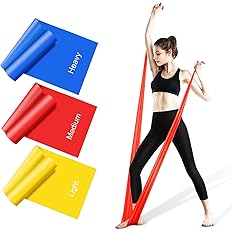
Resistance Bands: Versatile Tools for Fitness Enthusiasts
Resistance bands are a staple in the fitness world, known for their versatility and effectiveness. They come in various sizes, colours, and resistance levels, catering to a wide range of strength training exercises. Whether you’re a beginner or an advanced athlete, resistance bands can enhance your workout routine.
Benefits of Resistance Bands
- Adaptability: They can be used for a variety of workouts, from strength training to flexibility exercises.
- Portability: Lightweight and compact, they are perfect for on-the-go workouts.
- Cost-Effective: Compared to weights and machines, resistance bands are an affordable option to add to your fitness arsenal.
- Suitable for All Levels: With different resistance levels, they are suitable for all fitness levels and ages.
How to Use Resistance Bands
- Choose the Right Band: Select a band that gives you enough resistance to complete 8-12 reps with good form.
- Warm-Up: Always start with a warm-up to prevent injury.
- Maintain Proper Form: Focus on maintaining proper form to maximize benefits and reduce the risk of injury.
- Vary Your Workouts: Incorporate different exercises to target various muscle groups.
Exercises You Can Do with Resistance Bands
- Squats
- Lunges
- Bicep Curls
- Tricep Extensions
- Shoulder Presses
- Chest Presses
- Rows
Incorporating resistance bands into your fitness routine can lead to improved strength, flexibility, and overall health. They are an excellent tool for anyone looking to enhance their workouts without breaking the bank.
Remember, consistency is key. Keep challenging yourself by gradually increasing the resistance level and trying new exercises. Happy training!
Kettlebells:
Kettlebells: The Ultimate Tool for Functional Fitness
Kettlebells, the cannonball-shaped weights with a single looped handle on top, are a dynamic tool for developing strength, power, endurance, and balance. Originating from Russia, kettlebells have been used for centuries by strongmen and athletes to enhance physical performance.
Why Kettlebells?
Kettlebells offer a unique combination of benefits that set them apart from traditional dumbbells and barbells. Their off-centred weight distribution challenges stabilizing muscles, promoting functional strength that translates into everyday activities and athletic performance.
Versatility in Exercises
Whether you’re performing swings, snatches, or Turkish get-ups, kettlebells provide a full-body workout. They engage multiple muscle groups simultaneously, making your workout more efficient and effective.
Cardiovascular Improvement
Kettlebell exercises are not just about strength; they also provide a vigorous cardiovascular workout. High-intensity kettlebell routines can improve heart health and increase stamina.
Enhanced Flexibility and Mobility
Regular kettlebell training can improve flexibility and joint mobility. The dynamic nature of kettlebell movements encourages a full range of motion, which is beneficial for joint health.
Building Functional Strength
Functional strength is the ability to perform everyday tasks with ease. Kettlebell workouts mimic real-world movements like lifting, carrying, and reaching, thus enhancing your ability to perform these actions outside the gym.
How to Get Started
Before diving into kettlebell training, it’s essential to learn proper form from a certified instructor to prevent injury. Start with lighter weights and gradually increase as your technique improves.
In conclusion, kettlebells are an excellent investment for anyone looking to enhance their fitness routine. They’re compact, versatile, and can provide a comprehensive workout that builds strength, endurance, flexibility, and cardiovascular health.
Remember to consult with a fitness professional before starting any new exercise regimen to ensure proper form and prevent injury.
Building leg muscles for seniors
Building leg muscles is important for seniors in the UK, as it can enhance mobility, balance, and overall quality of life. When it comes to exercises tailored for seniors, it’s crucial to focus on low-impact and safe movements that effectively strengthen the leg muscles without putting undue stress on the joints.
Squats can be modified for seniors by using a chair for support, ensuring safety while still engaging the quadriceps and glutes. Deadlifts can be performed with lighter weights or resistance bands to maintain hamstring and glute strength. Lunges should be done with caution; stationary or side lunges are recommended to minimize the risk of losing balance. Leg presses can be substituted with seated leg extensions or curls on machines that allow for controlled movements and adjustable resistance.
Modifying squats can make them more accessible and comfortable, especially if you’re dealing with joint issues or just starting. Here are some ways to modify squats:
- Chair Squats: Start by sitting on a chair and standing up, using the chair for support as needed. This helps you maintain proper form and build strength.
- Wall Squats: Lean against a wall and slide down into a squat position, holding it like a seated position. This can reduce strain on your knees and back.
- Partial Squats: Reduce the depth of your squat to avoid putting too much pressure on your knees.
- Squat Holds: Lower into a squat position and hold it for several seconds to build endurance and strength in your leg muscles.
- Wide-Stance Squats: Position your feet wider than shoulder-width apart to target different muscle groups and potentially reduce knee strain.
- Box Squats: Squat down until your buttocks touch a box or bench behind you, then stand back up. This ensures consistent squat depth and can help with form.
Remember to keep your chest lifted, your back straight, and your weight on your heels throughout the movement. As always, listen to your body and adjust the exercise to suit your needs.
Modifying lunges is a great way to tailor this exercise to your fitness level or to accommodate any physical limitations. Here are some ways you can modify lunges:
- Static Lunges: Instead of stepping forward or backwards, you can perform lunges by stepping into the lunge position and then rising and lowering your body without moving your feet. This can help maintain balance and focus on muscle engagement.
- Side Lunges: Moving laterally, side lunges target different muscle groups and can be easier on the knees for some people.
- Reverse Lunges: Stepping backwards into the lunge can often be more stable and put less pressure on the knees than forward lunges.
- Assisted Lunges: Using a chair or wall for support can help you maintain balance as you perform the lunge movement.
- Partial Lunges: Limiting the range of motion by not lowering as far can reduce strain on the knees while still strengthening the leg muscles.
- Sliding Lunges: Using a towel or slider under one foot, slide back into a lunge position. This reduces the impact on your joints while still providing a challenge for your muscles.
Remember to keep your movements controlled and to focus on maintaining proper form to prevent injury. It’s also important to listen to your body and adjust the exercise as needed to ensure it’s comfortable and effective for you.
It’s also beneficial to include exercises like calf raises to strengthen the lower legs and improve ankle stability. Balance exercises such as standing on one leg or using balance boards can also contribute to leg strength and prevent falls.
Seniors should always consult with healthcare professionals before starting any new exercise regimen. Additionally, incorporating rest days and focusing on nutrition are key components of a holistic approach to building leg muscles and maintaining overall health in later years.
Remember to complement your leg workouts with proper nutrition and adequate rest to facilitate muscle growth and recovery. With dedication and consistency, you’ll see significant improvements in your leg strength and muscle definition.
MCD Kids Boxing Punching Bag Set Blue 8oz
MCD Kids Boxing Punching Bag Set Red 8oz
MCD Combo Boxing Gloves and Pads Black 10oz
Tags: leg muscles

